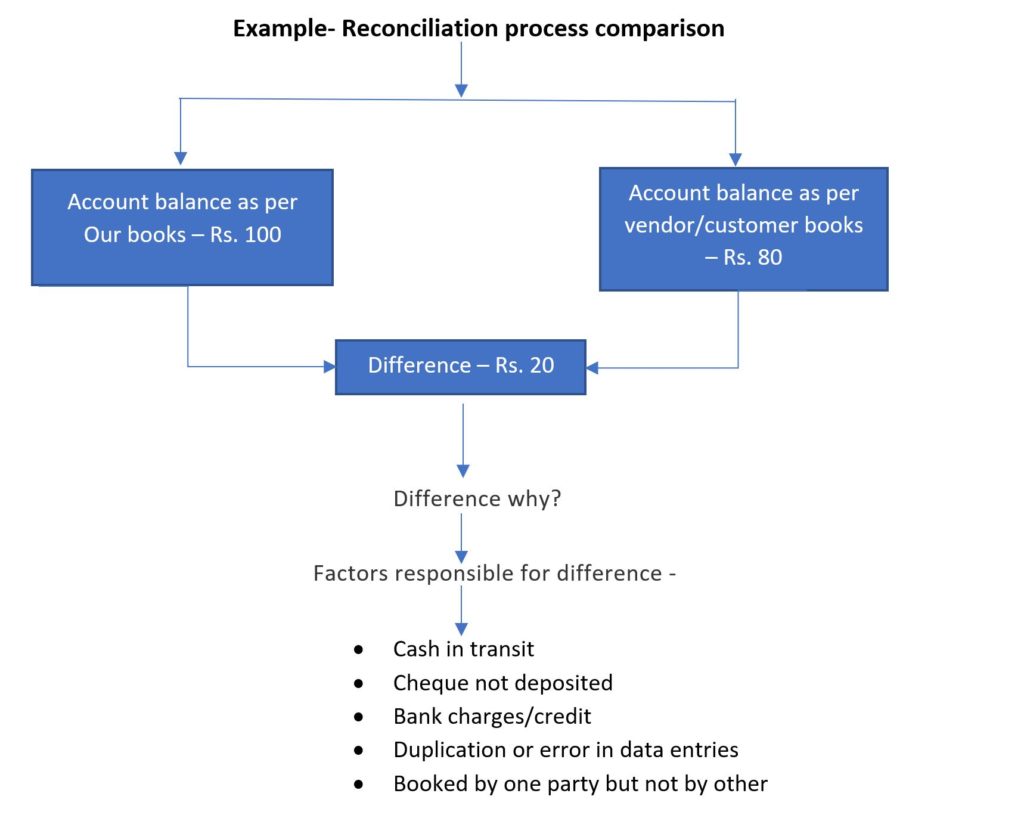The Insolvency and Bankruptcy Code, 2016 (IBC) was passed by Parliament in the year 2016, and is one of the most important and major economic reform that has taken place in the country in recent times providing for insolvency resolution process in a time bound manner.
The banking industry has long been burdened by bad loans, and pose a significant macro-economic risk. On the other hand, in recent times the Government of India has been emphasizing on easing the process of carrying out business in India. Hence, the IBC was framed with the intention to expedite & simplify the process of Insolvency and Bankruptcy proceedings in India, ensuring fair negotiations between Debtor and Creditor by removing the asymmetry of debt and default information.
National Company Law Tribunal
The Ministry of Corporate Affairs (‘MCA’) on 1st June 2016 notified the constitution of the Adjudicating authority(“AA”) National Company Law Tribunal (‘NCLT’), having territorial jurisdiction over the place where the registered office of a corporate person is located, for the insolvency and bankruptcy resolution u/s 408 of the IBC. Hence the (NCLT) is a part of the Companies Act, 2013 which replaces the Company Law Board (CLB). National Company Law Appellate Tribunal (‘NCLAT’) was constituted as the Appellate Authority under the Code.
The mandate of the NCLT is to enforce the insolvency code.
1.1 Impact of the constitution of NCLT and NCLAT on the Company Law Litigation
Single Window:
The newly constituted tribunals will replace the existing Company Law Board (‘CLB’), the Board of Industrial and Financial Reconstruction (‘BIFR’) and its appellate authority. Thus, the unnecessary fragmentation and multiplicity of the proceedings before various courts and tribunals in the same matter will now be curbed. The powers and jurisdiction previously reserved for the Central Government, the CLB or the High Courts have been consolidated and assign to a single authority, thereby simplifying the dispute adjudication process.
Class Action Claims :
Shareholders are allowed to file class action suits before the NCLT, against the company, directors or auditors for the breach of provisions of the Companies Act. This remedy will be crucial for the minority shareholders who seek redressal against arbitrary/oppressive decisions of their management.
Greater Field Impact:
Contrary to 5 benches under CLB, NCLT will commence with 11 benches, with the Principal Bench being in New Delhi. This will ensure wider reach for adjudicating company law matters in India.
Speedy Disposal of Cases:
The NCLT and the NCLAT are under a mandate to dispose of cases within a time limit of 180 days with an extension of 90 days for sufficient reasons to be recorded, which is expected to ensure the speedy disposal of cases.
The constitution of the NCLT as a single forum to deal with Company Law matters is a welcome move to various stakeholders as it is aimed at providing a speedy and efficient disposal of the matters. In addition, it will also help in taking the load off the overburdened High Courts.
Any person aggrieved by the order of the Adjudicating Authority under this part may prefer an appeal to the NCLAT. Every such appeal under shall be filed within thirty days before the NCLAT, subject to the proviso.
Any person aggrieved by an order of the NCLAT may file an appeal to the Supreme Court on a question of law arising out of such order under this Code within forty-five days from the date of receipt of such order.
An entire set of Rules govern the working of the NCLT, which are notified by Ministry of Corporate affairs, vide notification dated 21st July, 2016. It may be noted that NCLT Rules 2016 consists of a set of 165 Rules divided in 20 parts along with applicable forms for applications/ petitions, schedule of fees and list of documents to be attached with various applications/ petitions, etc.
Introduction to Insolvency & Bankruptcy Board of India and the Code
Insolvency and Bankruptcy Board of India (IBBI) was also established on 1st October, 2016 u/S 188(1) of IBC, to oversee the work of insolvency and bankruptcy of corporate persons, firms and individuals.
The IBC confers powers to the IBBI under various sections of the Code, to make regulations governing Insolvency Professionals, Insolvency Professional Agencies, Insolvency Resolution Process for Corporate Persons, liquidation, Information Utilities etc. Thus, IBBI is a unique regulator: regulates a profession as well as processes. Right from laying down regulations for minimum curriculum for the qualifying examination of the insolvency professionals, to specifying minimum eligibility requirements for their registrations, and carry out inspections and investigations in IPAs, etc., grievance redressal of IPs, IPAs and Information Utilities, all functions are under the purview of the IBBI.
Moreover, the Central Government has been conferred powers under clauses (c ), (d), (e) and (f) of sub-section (1) of section 239 read with sections 7,8,9 and 10 of the IBC, to make Rules which are applicable to the Adjudicating Authority for IBC cases, i.e. National Company Law Tribunal.
Although IBBI has been conferred powers to regulate the processes of insolvency and bankruptcy, the actual work is handled mainly by Insolvency Professionals (IPs). IPs are regulated by Insolvency and Bankruptcy Board of India (Insolvency Professionals) Regulations, 2016, and are members of Insolvency Professional Agency(IPA), which is any person registered with the IBBI under Section 201 as an IPA. IPA is also regulated by the IBBI under Insolvency and Bankruptcy Board of India (Insolvency Professional Agencies) Regulations, 2016.
2.1 Insolvency Professional (IPs)
Insolvency professionals are persons enrolled under section 206 with an IPA as member, and registered with the IBBI u/s 201.
Pre-registration course is mandatory before a professional is enrolled with the IBBI as an IP.
Where any insolvency resolution, fresh start, individual or corporate bankruptcy process or liquidation process has been initiated, it shall be the function of an IP to take such actions as may be necessary as per the relevant provisions of the Code.
Eligibility Criteria for CAs to Register as an IP:
As per Regulation 3 of the IBBI(IP) Regulations, 2016, the Board shall conduct a ‘Limited Insolvency Examination’ to test the knowledge and practical skills of individuals in the areas of insolvency, bankruptcy and allied subjects. As per Regulation 5 of the same, the eligibility to be registered as IP is granted if:
- He has passed the National Insolvency Examination;
- He has passed the Limited Insolvency Exam, and has 15 years of experience in management, after he received a bachelor degree from a university established or recognized by law; or
- He has passed the Limited Insolvency Examination and has ten years of experience as –
- A chartered accountant enrolled as a member of the Institute of Chartered Accountants of India,
- A Company Secretary enrolled as a member of the Institute of Company Secretaries of India,
- A Cost Accountant enrolled as a member of the Institute of Cost Accountants of India, or
- An advocate enrolled with a Bar Council.
The IBBI(IP)Regulations, 2016 specify the code of conduct for IPs.
2.2 Insolvency Professional Agency (IPAs)
The application, registration, renewal, grant, rejections etc. regarding IPAs is governed by the IBBI(IPA) Regulations, 2016. Currently there are three insolvency professional agencies registered with the Board; promoted by three statutory regulators of professions – ICAI, ICSI (Institute of Company Secretaries of India) and ICAI (Institute of Cost Accountants of India),”
The basic function of an IPA is to grant membership to persons who fulfil all requirements set out in its bye-laws on payment of membership fee; suspend or cancel the same if required safeguard the rights, privileges and interests of member IPs;
It is pertinent to note that since the word used is ‘person’ in the definition of IP, IP can be only an individual, LLP, partnership firm or a company.
2.3 Information Utilities [IUs]
Information utility is a person registered with IBBI and is an information network which would store financial data like borrowings, default and security interests among others of firms. IUs are regulated by the Insolvency and Bankruptcy Board of India (Information Utilities) Regulations, 2017. The utility would specialize in procuring, maintaining and providing/supplying financial information to businesses, financial institutions, adjudicating authority, insolvency professionals and other relevant stake holders.
It is mandatory for financial creditors (banks which provide loans to the company)to provide financial information to the information utility. When they initiate insolvency proceedings against the defaulting firm (known as corporate debtor), the utilities may help as they would act as a centralised platform for accessing data.
Unlike financial creditors, it is optional for the operational creditor (Suppliers of goods and services) to provide financial information to the utility.
2.4 Insolvency Professional Entities [IPEs]
IPEs are kind of boutique firms, the sole objective of whom is to provide support services to IPs, who are either partners or directors of IPE.
The minimum net worth of the IPEs must be Rs 1 crore while majority of share capital or partners’ capital must be held or contributed by partners or directors who are IPs. Majority of directors or partners are required to be insolvency professionals.
Scheme of IBC
The provisions of the IBC are applicable to Individuals, Partnership and Proprietorship Firms, Limited Liability Partnerships, Companies and personal guarantors to corporate debtors, in relation to their insolvency, liquidation, voluntary liquidation or bankruptcy, as the case may be.
The provisions relating to Corporate i.e., Limited Liability Partnerships and Companies have been notified and in force w.e.f. 1st December, 2016. The provisions related to Individuals and Unlimited Partnership Firms – the Part III of IBC, 2016 are yet to be notified.
3.1 Understanding the Corporate insolvency resolution Process (CIRP):
Part II of IBC deals with insolvency resolution and liquidation for corporate persons. It is applicable to corporate persons, which means a company as defined in clasue (20) of section 2 of the Companies Act, 2013, a limited liability partnership, as defined in clause (n) of sub-section (1) of section 2 of the LLP Act, 2008, or any other person incorporated with limited liability under any law for the time being in force but shall not include a financial service provider.
The basic idea of the new law is that when an enterprise (individual, firm or corporate) defaults, the control shifts to Committee of creditors. They have specified time limit to evaluate proposals for resuscitating (rehabilitating) the enterprise or taking it to liquidation. Decisions are required to be taken in a time bound manner so that there are greater chances that the enterprise is saved as a going concern and productive resources of economy can be put to best use.
Corporate Insolvency Resolution Process (CIRP) is regulated by Insolvency and Bankruptcy Board of India (Insolvency Resolution for Corporate Persons) Regulations, 2017. It can only be initiated when the minimum amount of default is rupees is one lakh or such higher amount as may be notified by the Central Government which shall not exceed one crore rupees.
The following persons can initiate Corporate Insolvency Resolution Process:
- Financial Creditor (by itself or jointly with other creditors), on occurrence of default, can file the application.
- Operational Creditor, after giving 10 days notice to the Corporate Debtor, on default or no response to such notice, can file the application.
- The Corporate Debtor himself may also initiate the Corporate Insolvency Process.
In the above, Creditor means any person to whom a debt is owed and includes a financial creditor, an operational creditor, a secured creditor, an unsecured creditor and a decree-holder.
Corporate debtor means a corporate person who owes a debt to any person.
Default means non-payment of debt when whole or any part or instalment of the amount of the debt has become due and payable and is not repaid by the debtor or the Corporate debtor.
The IP will be initially appointed as Interim Resolution Professional, and will form a Committee of Creditors and with their concurrence, efforts will be made to evolve and finalize plan to revive the corporate person. The resolution professional shall act as the Chairperson of the meeting of the Committee. All the decisions of CoC shall be taken by vote of not less than 66.67% of voting share of Financial Creditors. Related Party should be excluded in determining the 66.67% of voting share.
Committee of Creditors (CoC) term is used for the group of persons who form the financial creditors of the corporate debtor.
Application shall be made to the NCLT with regard to CIRP in a petition as per the format of Form No. 5 as notified by the NCLT Rules, 2016. Every document to be filed with the NCLT is to be prepared in a specified format, with the detailed specifications of font, margins, type of paper to be used language, copies to be made, etc. are all notified in the Rules. 14 days from the date of such admission of the application, an Insolvency Professional is appointed. This IP is either as proposed by the applicant or as appointed by the Adjudicating Authority, and will manage the affairs of Corporate Debtor till the date of appointment of Resolution Professional by CoC.
The officers and managers of the Corporate Debtor, shall report to Interim Resolution Professional. In case of any non-cooperation from Corporate Debtor, he may file an application to Adjudicating Authority for necessary instructions. Then, Adjudicating Authority shall direct accordingly.
In the first Meeting of the CoC, either Interim Resolution Professional is confirmed as the Resolution Professional or other Insolvency Professional may be appointed as Resolution Professional.
Thus the actual work of CIRP shall be done by the IRP/RP under the supervision of CoC and NCLT.
The process is required to be completed in 180 days from date of application by NCLT to initiate CIRP as per Sec 12(1) of the IBC. This period can be extended if RP files application to the AA, by a maximum period od 90 days.
After admission of application, AA shall pass order for moratorium u/s 14, prohibiting the corporate debtor to undertake certain actions for a specified period of time, and also cause public announcement of the CIRP.
The RP can invite prospective resolution applicant/s, who fulfil such criteria as may be laid down by him with the approval of C0C, having regard to the complexity and scale of operations of the business of the corporate debtor and such other conditions as maybe specified by the Board. Resolution Plan means a plan proposed by a Resolution Applicant for insolvency resolution of the Corporate Debtor as a going concern.
Resolution applicant means a person, who individually or jointly with any other person, submits a resolution plan to the resolution professional pursuant to the invitation made by the RP u/s 25(2)(h) of the IBC.
The RP shall prepare an Information Memorandum as per Sec 29, which shall contain all relevant information for formulating a resolution plan.
There is a new amendment inserted u/s 29A, which renders certain persons ineligible to be resolution applicants, these people include undischarged insolvents, willful defaulters, convicted offenders, disqualified directors, person who has an account of the corporate debtor under his control, or of whom such person is the promoter, classified as NPA as per RBI norms, atleast a period of 1 year has lapsed since the date of such classification till the date if commencement of CIRP. None of the conditions of this section shall apply to a financial entity who is not a related party of the corporate debtor. Sec 29A is one very important amendment which has brought about many restrictions on the person eligible to be a resolution applicant, and has resulted into reduction of undue advantage to persons with personal interest in the corporate debtor.
As per sub-section (1) of Sec 30, a resolution applicant may submit a resolution plan to the RP prepared on the basis of the information memorandum. The RP shall present to the committee of creditors for its pproval, such resolution plans that confirm the conditions prescribed under the section. If the CoC confirms the plan by voting in favour by not less than sixty-six percent of voting share, the same shall be submitted to the AA by the RP. The AA may accept or reject the plan as per Sec 31.
The first step is to make efforts to revive and restart the corporate person by preparing the resolution plan. If that does not work, next process is liquidation, i.e. extinction of the corporate person. The AA shall pass an order for liquidation in following cases:
- Resolution plan required u/s 30(6) of IBC is not received in time
- AA rejects the resolution plan u/s 31 for non-compliance of the requirements specified
- Before approval of the plan, the RP intimates to NCLT the decision of CoC to liquidate the corporate debtor
- If resolution plan approved by AA is contravened by Corporate Debtor, any person other than corporate debtor whose interests are prejudicially affected by such contravention, may make application for liquidation order.
Fast Track CIRP : A speedy process of CIRP has also been designed for certain small corporates u/s 55(2) of IBC.
Emerging Opportunity for Professionals
As India’s banks try and resolve the bad loans that pose a significant macroeconomic risk, insolvency professionals stand to get a big career boost. Chartered accountants, cost accountants and company secretaries are said to be rushing to get themselves qualified—and this is said to be just the beginning. If the bankruptcy process unfolds as it’s meant to, thousands of insolvency professionals will be needed to oversee the process and run distressed assets as part of debt resolution.
Considering the opportunities under the IBC and IBBI along with NCLT the Chartered Accountants in practice can get following opportunities:
-
Interim Resolution Professional (IRP)/Resolution Professional (RP):
After the eligibility of qualification as mentioned before, 50 hours training is mandatory before CA can work as IP. IP can initially work as Interim Resolution Professional (IRP) and thereafter can be confirmed by CoC as Resolution Professional (RP) and can complete the entire CIRP.
The IRP plays a pivotal role in the process of CIRP. He practically substitutes the management of the corporate debtor, and all including the board of directors have to report to him and run as per his directions. It is a great burden to take the responsibility to be an RP, and he has to act ethically, in their fiduciary capacity.
His duties shall include
(a) collecting all information relating to the assets, finances and operations of the corporate debtor for determining its financial position, including information relating to –
(i) business operations for the previous two years;
(ii) financial and operational payments for the previous two years;
(iii) list of assets and liabilities as on the initiation date;
(c) constitute a committee of creditors;
(d) monitor the assets of the corporate debtor and manage its operations until a resolution professional is appointed;
(e) file information collected with the IU, if necessary;
(f) take control and custody of any asset over which the corporate debtor has ownership rights
Appointment of resolution professional:
(1)The first meeting of the committee of creditors shall be held within seven days of the constitution of the committee of creditors.
(2) The committee of creditors, may, in the first meeting, by a majority vote of not less than sixty-six per cent of the voting share of the financial creditors, either resolve to appoint the IRP as a RP or to replace the IRP by another RP.
RP also has similar, in fact more important role to play since he has to run the company which is under CIRP, and put up his best to resolve the insolvency in a time bound and efficient manner.
Duties of Resolution Professional include:
(1) to preserve and protect the assets including the continued business operations of the corporate debtor.
For that purpose, the resolution professional shall undertake the following actions, namely: –
(a) take immediate custody and control of all the assets of the corporate debtor
(b) represent and act on behalf of the corporate debtor with third parties, exercise rights for the benefit of the corporate debtor in judicial, quasi-judicial or arbitration proceedings;
(c) raise interim finances subject to the approval of the CoC;
(d) appoint accountants, legal or other professionals;
(e) maintain an updated list of claims;
(f) convene and attend all meetings of the CoC;
(g) prepare the information memorandum;
(h) invite prospective resolution applicants, who fulfil such criteria as may be laid down by him with the approval of committee of creditors to submit a resolution plan or plans.
(i) present all resolution plans at the meetings of the CoC;
Many banks are increasingly tapping such insolvency professionals from all three institutes including ICWA, ICAI and ICSI. Institutes also approach lenders, offering their services with a list of qualified insolvency professionals.
The IPAs will develop professional standards, code of ethics and the first level regulator for insolvency professional members. This will lead to development of a competitive industry for such professionals.
-
Insolvency Professional (representing members of CoC)
As per clause (c) of sub-section (6) Sec 21, where the terms of the financial debt extended as part of a consortium arrangement or syndicated facility provide for a single trustee or agent to act for all financial creditors, each financial creditor may appoint an insolvency professional (other than the resolution professional) at his own cost to represent himself in the CoC to the extent of his voting share.
Also, as per the newly inserted sub-section (6A) of Section 21, as per clause (a) where the financial debt is in the form of securities or deposits and the terms of the financial debt provide for the appointment of a trustee or agent to act as authorized representatives for all financial creditors, the trustee may be appointed.
As per clause (b), where the financial debt is owed to a clas of creditors exceeding the number as specified, the IRP shall make an application to the AA along with the list of all financial creditors, containing the name of an IP, other than the IRP, to act as their representative who shall be appointed by the AA before the first meeting of CoC.
Further as per clause (c ), where a financial debt is represented by a guardian, executor or administrator, such person shall act as authorized representative of the creditors.
As per Sec 25A of the IBC, The role of an IP representing any member/s of CoC is to make decisions favourable to the member whom they represent, by exercising their right to vote in the decision making process. They also have the right to require the RP to furnish any financial information. Also, there are many duties that the authorized representatives have to follow, which include circulating the agenda and minutes of the meetings of the CoC, and not to act against the interest of the financial creditor he represents. The authorized representative is supposed to file with the CoC, anyinstructions received by way of physical or electronic means, from the financial creditor he represents, for voting in accordance therewith, to ensure that appropriate voting instructions of the financial creditor he represents is correctly recorded by the IRP/RP.
-
IP as Liquidator
When the company is to be liquidated as per IBC provisions, the AA may replace the RP in case
- the resolution plan submitted by original RP is rejected on failure to meet the requirements as per IBC,
- the IBBI recommends replacement of RP based on reasons to be recorded
- the RP fails to submit their written consent.
The Liquidator has many rights and duties as per Sec 35 of the IBC. He shall act as per instructions of AA, apart from the powers as per the Code which include verifying all claims of creditors, take custody or control over assets, property, effects and actionable claims, take such measures to protect and preserve, if required, sell the assets and properties, and overall to carry on the business for its beneficial liquidation.
-
Representing the petitioner or respondent in IBC cases
When CIRP is initiated, there has to be representation both from the petitioner as well as the respondent. Both these roles can be justified or practicing CA.
IBC is a new area mainly replacing SICA Act. BIFR and AAIFR were mainly located in New Delhi. There were handful of professionals taking care of representations of sick companies as well as that of financial institutions and creditors. While IBC is being adjudicated by the NCLT having 11 benches plus the principal bench across many states, it is a huge area of practice for the professionals. CAs can also appear before the NCLT in the cases of IBC. This will not only enhance the oratory skill of the CAs but also will give an understanding to the CAs about the procedural aspects of the courts and accordingly it will sharpen their skill in representation before other authorities. Thus under Insolvency and Bankruptcy Code, CAs can represent the financial creditor, operational creditor or a corporate debtor as petitioner or as respondent. This being a new area competitive edge of the advocate shall not create any complication for the practicing CAs and accordingly it will give a level playing field to all CAs to work in the said area.
-
Forensic Audit of cases under IBC
Upon appointment as IP of any corporate debtor, if he feels that there are fraudulent transactions or the transactions which have been entered into by the corporate debtor for the benefits of the promoters or their relatives, then forensic audit may be called for. Forensic audit is a special skill to be developed by CAs and is required which can be completed within a specific timeframe. This is a lucrative area for CAs. However, it requires intense hard work, special insight and proper presentation so as to cover each aspect of the forensic audit.
It is in the nature of investigative audit, entrusted with the specific objectives of unearthing preferential transactions, extortionate credit transactions, unexplained transactions, transactions defrauding creditors, etc. as per the IBC Regulations.
-
Registered Valuer
Upon clearing an exam conducted by the Registered Valuer Organisation, any practicing CA (over and above other professionals as mentioned in Rules), having experience as required, can become registered valuer under the Companies (Registered Valuers and Valuation) Rules, 2017. All valuations of assets, shares, etc. as and when required under the Code are to be carried out by this Registered Valuer.
-
Assitant to the IP
Recently IBBI has also come out with a special course designed for the professionals who cannot work as RP or IRP but can get extensive training as specified by IBBI and upon completion of the said training they can work as Assistants to the RP/IRP. This is because of the fact that in large cases the mid sized companies the RP himself cannot control the entire business. More so, each industry has its own strength and weaknesses which cannot be immediately grabbed by the RP so that a well competent and qualified team is required to assist the RP. Thus, this is one area for CAs who can work as Assistants to RP and after qualifying they can become a matured RP.
-
Advisor to RP/CoC
A practicing CA can also be an advisor to the RP or CoC in an on-going CIRP. In a short span of about 18 months it has been observed that number of legal questions are being faced by the RP as well as CoC. Thus, number of statutory authorities are also preferring their interlocutory applications before the NCLT against the RP or COC, corporate debtor and accordingly there has to be a proper representation required by RP as well as COC. Thus, CAs in practice can also explore this area to represent before NCLT on behalf of RP/COC.
-
CA representing matters of Companies Act in NCLT
All other matters which have to be adjudicated under the authority of the NCLT, have to have representations by professionals, both from petitioner as well respondents’ side. A practicing CA is very well qualified to represent the clients in matters like restoration of struck off companies, amalgamations, mergers and demergers, oppression and mismanagement, etc.
-
Advisor to Resolution Applicant
It has been observed that a resolution plan is required to be prepared by a seasoned professional so that the overall required concessions and reliefs as envisaged by the resolution applicant can be granted in right spirit. More so, resolution applicant has also to take a call of correct value to be offered to various class of creditors, so proper projections are required to be made so that in long run there shall be a viability of the project. For this also CAs in practice can play a pivotal role in advising various resolution applicants for submitting proper resolution plan.
- With Part III of IBC being made applicable, there will be many opportunities in insolvency resolution of individuals and partnership firms and the constitution of their adjudicating authority – Debt Recovery Tribunal
Komal Majmudar
Chartered Accountant




















